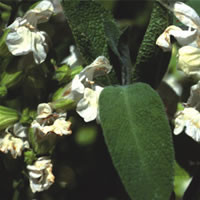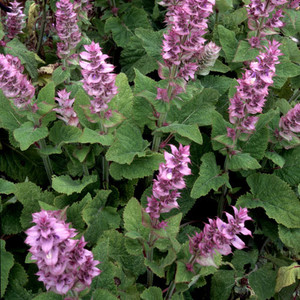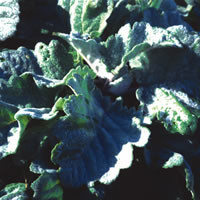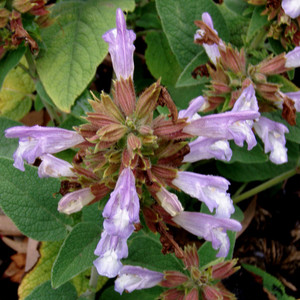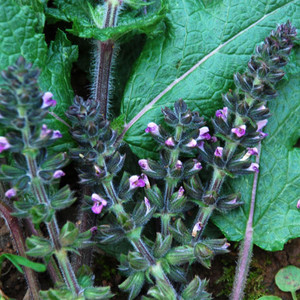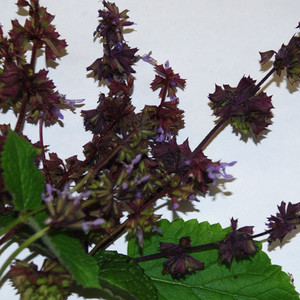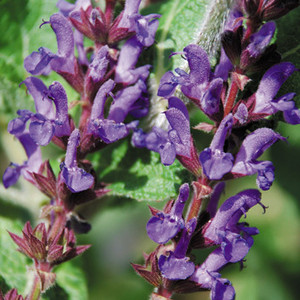-
Nothing here. Please add something or load your cart
-
SALVIA NEMOROSA MERLEAU ROSE
Bring a splash of vibrant color to your garden with Salvia nemorosa 'Merleau Rose,' also known as Wood Sage or Balkan Clary. This stunning perennial belongs to the Lamiaceae (mint) family, recognized for its aromatic foliage and showy flower spikes. 'Merleau Rose' is a cultivar of the Salvia nemorosa species, sometimes listed under its synonym, Salvia x superba. It is a favorite among gardeners for its ability to attract bees, butterflies, and other beneficial pollinators while offering a long blooming season. 'Merleau Rose' is perfect for borders, containers, or cottage gardens. Its dense ... Learn More$3.56
(20 seeds)
-
SALVIA OFFICINALIS ALBA
"Albino Sage". The rarely seen and very lovely pure white flowered form of common sage. It also has paler milky grey foliage and a slightly dwarfer habit than the normal blue flowered form. ... Learn More$3.49
(20+ seeds)
-
SALVIA SCLAREA
Possibly the easiest and most impressive of all hardy salvias. From large furry rosettes arise superb branching spikes of large pink-bracted blue and white flowers. An unforgettable sight in a warm dry position where other plants will struggle! ... Learn More$3.97
(20+ seeds)
-
SALVIA SELECTION
This exciting mix of salvia species will give you a variety of forms and colours for your garden. Size and colour of flower will vary from white to blues and reds. Includes salvias listed in this issue and: Salvia amplexicaulis, barrelieri, glutinosa, nemerosa ostfriedland. ... Learn More$3.49
-
SALVIA TOMENTOSA
A very lovely plant making beautiful rosettes of hairy, silver-grey leaves from which arise in spring, square-section stems, with dividing heads of large pale blue flowers. This rarely-seen plant is very hardy, down to Z5-6 in the USA but demands a dry place in the garden or a large pot in the winter. It is native to eastern Europe and across Western Asia, and ascends the mountains of Turkey up to over 2,000 meters where it is found in company with Pinus brutia, Pinus nigra and Quercus pubescens in macchie, on limestone or igneous slopes. The leaves are still used as a condiment as a strong ... Learn More$3.97
(15 seeds)
-
SALVIA VERBENACA
Wild Clary has soft purple to violet flowers which grow on many inflorescences that rise above the leaves, and are held in a hairy calyx, with showy green-veined bracts adding to the plant's charm. Wild Clary is a native across much of Europe and North Africa and is strongly aromatic. In cultivation, it prefers full sun, loose soil, good drainage, and regular watering. ... Learn More$3.49
(30+ seeds)
-
SALVIA VERTICILLATA
Superficially like but much smaller than S. forsskaoleii, this attractive salvia produces short spires of violet blue flowers above neat basal clumps of triangular-ovate leaves. When the inflorescences, which are closely packed in dense globular whorls, fade and fall off, sprays of bright, attractive, violet calyces remain. ... Learn More$2.67
-
SALVIA VIRGATA
This plant, originally from the west coast of the USA bears sprays of small blue and white "snap-dragons" on extended heads of flowers on stems of thick corrugated leaves. ... Learn More$3.49
(25+ seeds)
-
SALVIA VISCOSA
Native to the mountains shared by Israel and Lebanon, this tidy and unusual plant is easy to grow and is also both drought and heat resistant, flowering over a long period. With tall, branched spikes of dusky-pink flowers and strap shaped leaves in a dense rosette, it is perfect for dry borders, dying away completely each winter. Native to a small area of mountains in Lebanon and Israel, this quite rare plant was first described in 1781 by Nikolaus Joseph von Jacquin, but only began being sold in nurseries in the 1990's! ... Learn More$3.97


